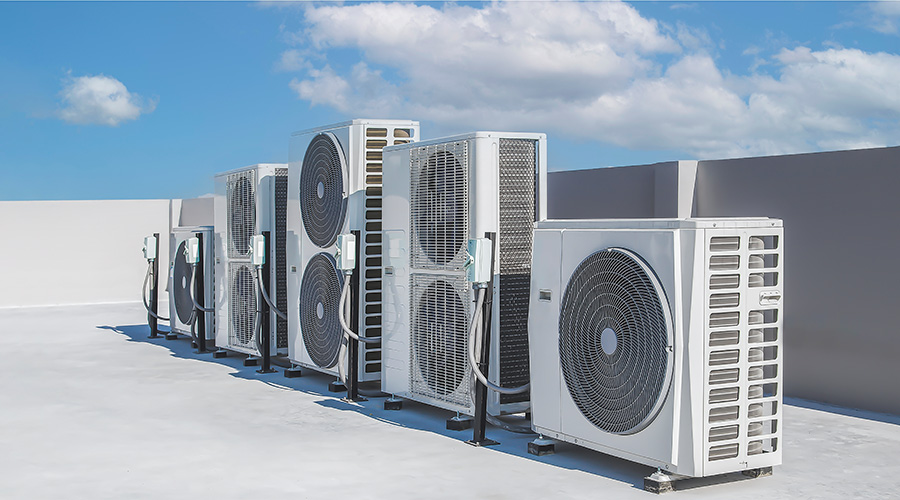To Improve HVAC Acoustics, Isolate Mechanical Equipment Vibration
It is also critical to isolate mechanical equipment vibration from the building to improve HVAC acoustics. HVAC equipment produces vibration that, if not properly addressed, can transmit vibration (and vibration-induced noise) throughout the building. If the vibration-producing mechanical equipment is located far enough from noise-sensitive spaces, there is more of a safety factor to reduce vibration transmitted to the space (e.g., if the vibration isolation fails or is installed incorrectly).
Any mechanical rotating equipment should be isolated in some manner to reduce the transfer of vibration, even if this equipment is located slab on grade. Consider, for example, an end-suction pump placed on slab on grade that is not vibration-isolated. This pump transmits vibration into the slab. The slab, while large, will still vibrate; the vibration is transmitted throughout the slab and then into connecting walls, and then on to the level above. This transmitted vibration gets into walls, floors, or ceilings that will radiate airborne noise, which can be loud, distracting, or intrusive and increases the background sound levels for occupants.
Isolators that are used for vibration isolation come in many different varieties. Some isolators are neoprene type pads under floor-mounted equipment, which evenly support the equipment and absorb vibration. Others are spring isolators, which are point-loaded to support equipment and absorb vibration. Engineers select the isolators according to the minimum operating speeds and weight of the equipment. Generally, equipment that runs more slowly — say, cooling towers — requires larger, softer spring isolators. Isolators can also be specified to meet seismic requirements and vibration isolation within one isolator. Piping and ductwork connected to the vibrating equipment can transmit noise as well, and must be considered. It is typical to use spring hangers to isolate piping and flexible ductwork connections for ducts connected to vibrating equipment.
Related Topics:













